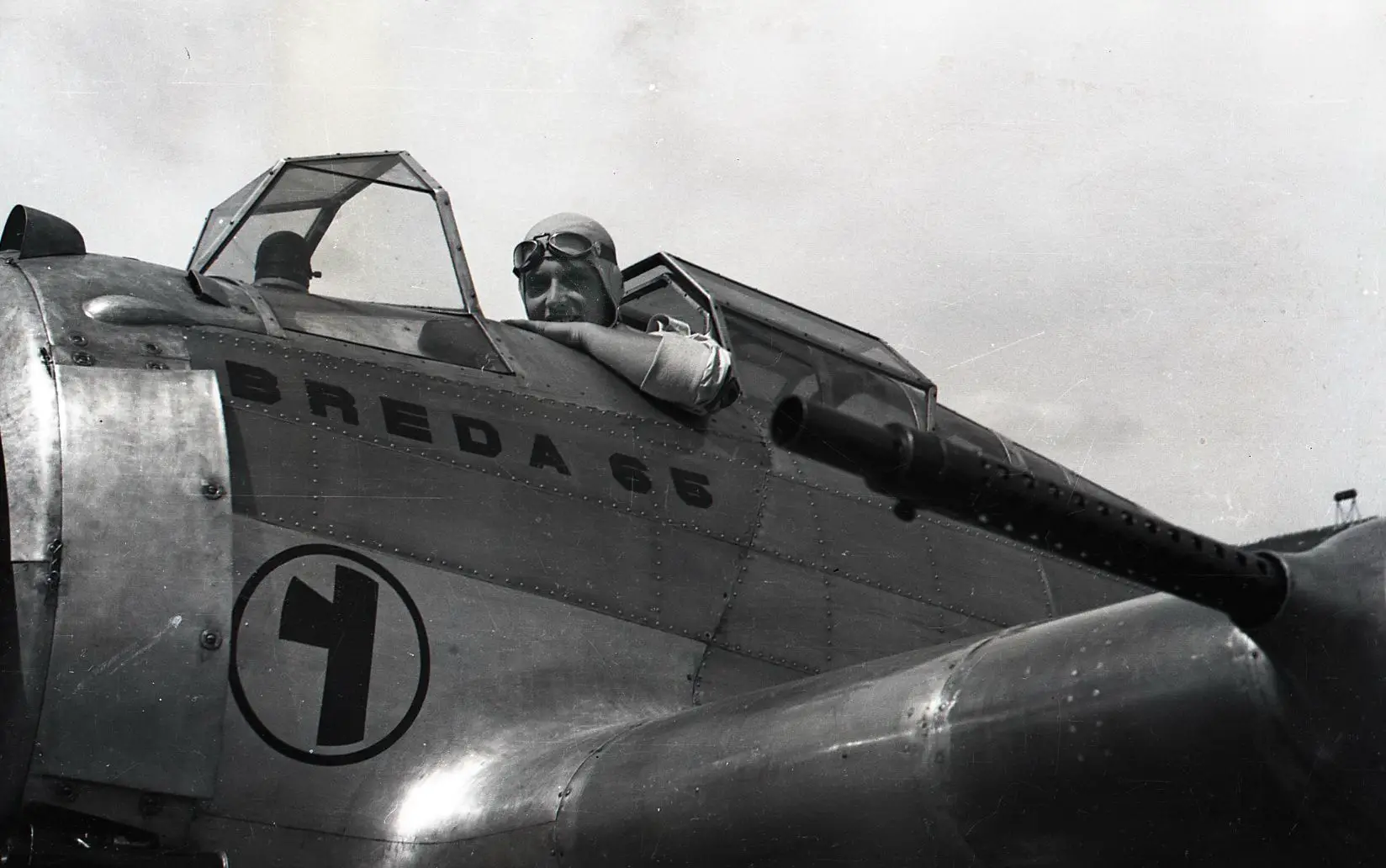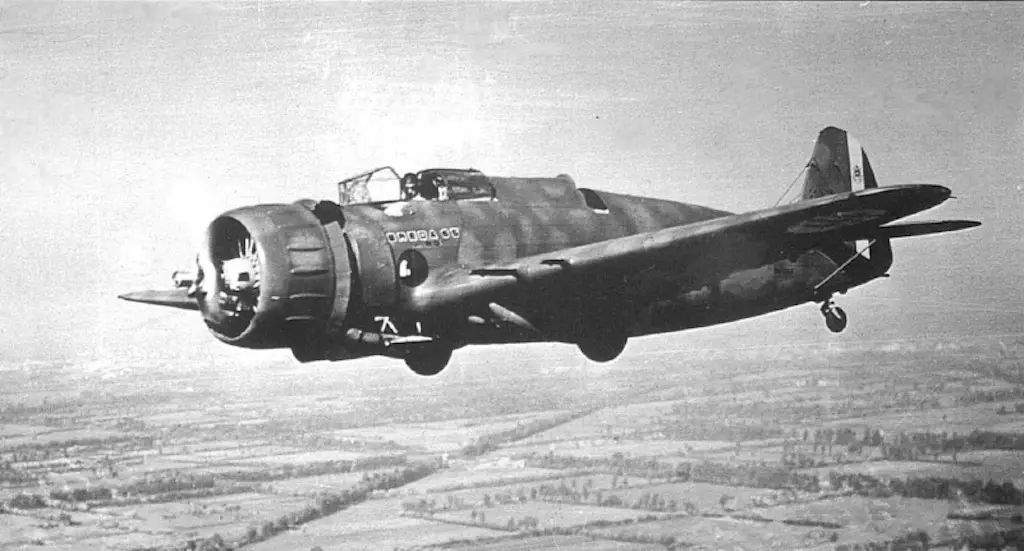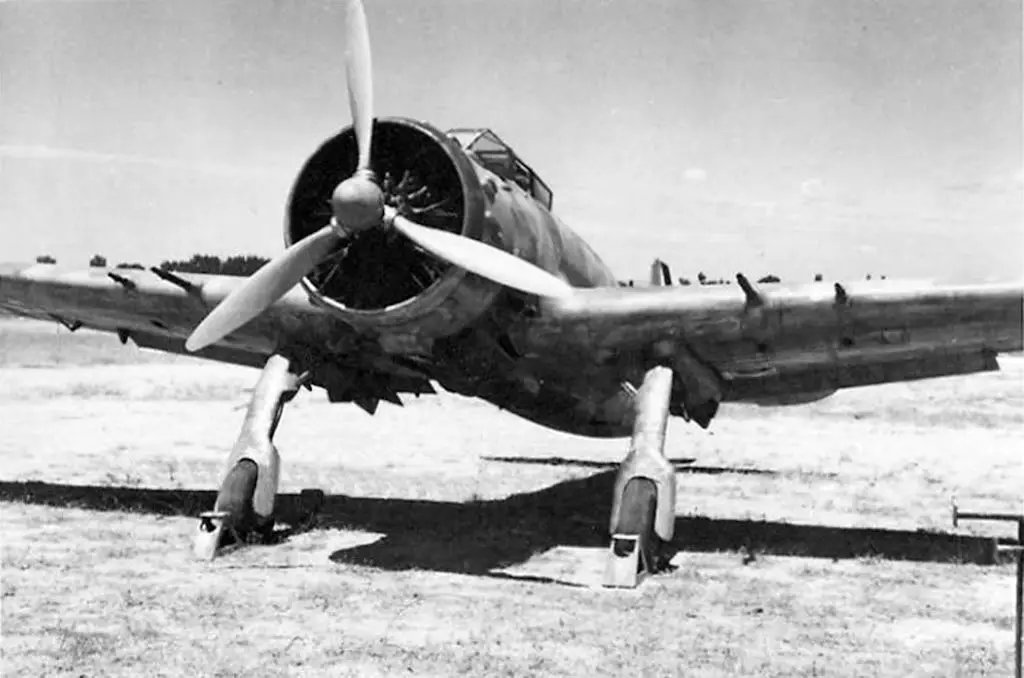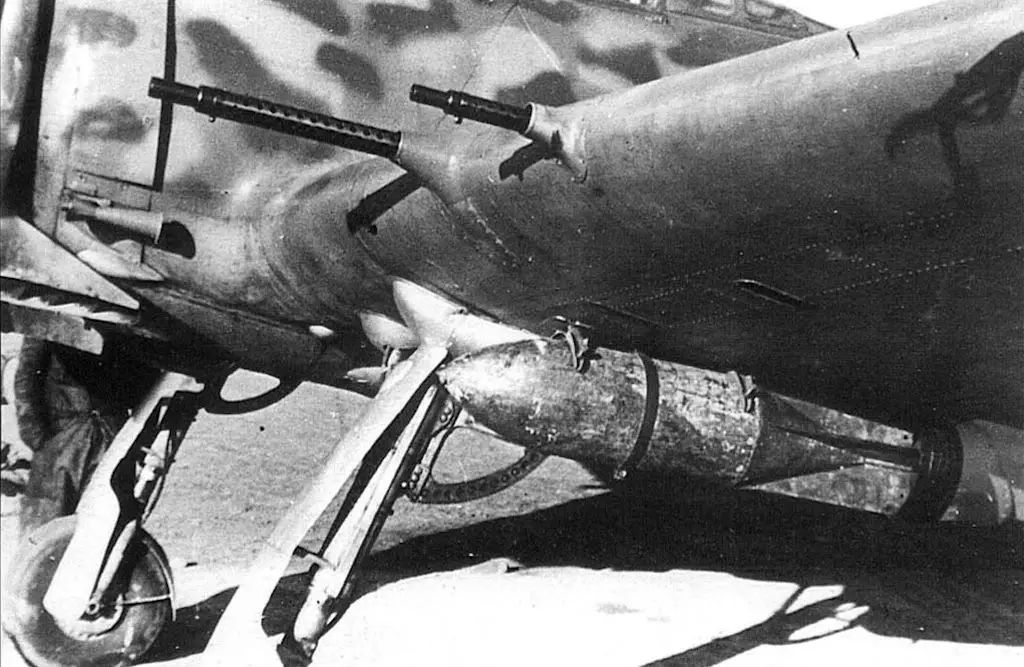Background on the Breda Ba.65
Throughout the 1920s, Italy led the way with many innovations in military aviation. Italy counted some of the finest biplane fighters, such as the Fiat CR 32 and CR 42 as domestic designs. It seems curious, then, that Italy also flew such poor designs as the Breda Ba.64 and Breda Ba.65.

The Breda 65 prototype MM 325.
The root of the decline is found in the conservative attitudes among the Regia Aeronautica. Throughout the 1930s, many believed that the mobility of wooden biplanes meant that such aircraft weren’t obsolete. A future dominated by expensive, complex monoplanes represented a severe detriment to Italy’s position as an airfaring power. As reality was deeply inconvenient, it was simply easier to disregard.

Eventually, the Italian aircraft industry righted itself and produced such excellent aircraft as the MC.202 Folgore and MC.205 Veltro. They suffered many stumbles on the path to producing proper monoplanes, however. The Breda Ba.65 was one such stumble. While a marked improvement over the Ba.64, which was a threat to no one more than its own pilot, it still took little time to be judged unsuitable for war. Breda and Caproni produced only 218 of the aircraft prior to the plane being officially retired in 1941. However, it did find a respectable export market, with Iraq, Chile, and Portugal buying up a quarter of the production.
Spawned From The Breda Ba.64
When Italy searched for a design capable of performing numerous roles – ground attack, dogfighting, reconnaissance – they chose the Ba.64 as their solution. The Ba.65 was an answer to the deficiency revealed in the Ba.64. While intended to serve as a fighter and bomber, the Ba.64 suffered from terrible flight characteristics which prohibited it from engaging other aircraft. Dedicated bombers, such as the JU-87 ‘Stuka’ enjoyed superior maneuverability and speed, and the heavy controls of the Ba.64 intimidated the pilots more accustomed to biplanes.

Breda Ba.65 in flight.
The Regia Aeronautica accepted the delivery of the Ba.65 on 27 October 1935 and became fully operational in June 1936. The 167a Squadriglia received the first batch of aircraft at Ciampino.
The Series 1 production of the Breda Ba. 65 employed the French 700 hp Gnôme-Rhône K-14 radial engine, produced under license by Isotta Fraschini. While this alleviated the worst of the problems of the Ba.64, later production employed the 1000 hp Fiat A.80 RC.41 engine. Even though it was enough of an upgrade to make the plan into an airworthy attack aircraft, performance remained poor compared to proper fighters. The inadequate training of pilots transitioning from biplanes also contributed to several major accidents. In fact, eight pilots died in aircraft related accidents in 1938.

A front view of the Ba.65.
Although considered effective during the Spanish Civil War, it served rather poorly in North Africa.
A Closer Look
Powered by the Fiat A.80 RC.41 18-cylinder radial piston engine, the Breda Ba. 65 held a top speed of 430 km/h. Internal fuel could carry it for a range of 544 km, and its empty weight was 2500 kg. At a maximum combat load, weight equaled 3,150 kg. The airframe carried a marked similarity to the predecessor, with a wingspan measuring 11.9 m, a length of 9.30m, a height of 3.20m, and a total wing area of 23.5m.

A closer look at the armament and bomb rack.
The aircraft held adequate air-to-air armament for combat in Spain, but it suffered when the larger war began. While the two 12.7mm machineguns were potent, the 7.7mm machineguns held a reputation for uselessness. Later pilots of the Macchi C.202 Folgore, given the option, rejected the 7.7mm machine guns entirely as not worth their weight. The Ba.65 carried a useful bomb load. The load consisted of 200 kg capable of being carried on the underwing racks and 300 kg in the fuselage bomb-bay.

A pilot entering the cockpit of the Ba.65
Variants
Several variants existed but were indistinguishable by technical specifications. Besides the Serie 1 versions with their particularly underpowered engines, the rest were only distinguished by the number of seats. The Regia Aeronautica employed the two-seat variant Ba.65bis for training and other roles. The additional weight caused a minor loss in performance, as the two-seater flew a top speed of 410 km/h. Because of performance issues, Italy utilized the aircraft almost exclusively in the single seat configuration.
Importers And Foreign Operators
Between Iraq, Chile, Portugal, and Argentina, roughly 50 Breda Ba.65 units were sold overseas. Of these, the most important buyer was Iraq. The Kingdom of Iraq purchased twenty-five two-seat models in 1938, including two trainers and twenty-three armed with a rear-facing turret. When a pro-Axis coup seized power in Iraq, these planes saw battle with British forces.

A crashed Iraqi Breda 65.
Additionally, Spain did not import the Ba.65 but retained a few of them after the Civil War. The Italian volunteers in Spain brought a total of 23 into Spain and the 11 surviving planes passed into the hands of the Nationalists.
Spanish Civil War
In light of its deficiencies, the upgraded power plant made the Breda Ba.65 somewhat more viable. In April 1937, the aircraft joined the Spanish Civil War. During combat in Spain against negligible air opposition, it performed favorably alongside the earliest Ju-87 Stuka models. The Ba.65 even won a chance aerial victory, when a pilot of the 65a Squadriglia encountered a lone Tupolev SB Bomber. In the battles of Santander, Teruel and the Ebro, the aircraft seemed adequate. When pit against a competent enemy such as the Royal Air Force, its shortcomings became quickly apparent.

Ba.65 16-12 in Spain.
World War Two
Despite its known weaknesses, the failure of other efforts to provide a ground attack platform kept 150 Ba.65’s in service. At the outbreak of war with Britain, they suffered badly in combat with Hurricanes and Spitfires. Additionally, desert conditions took a severe toll on the A.8o engines and their serviceability. Italo Balbo requested a replacement aircraft before the initiation of hostilities against Great Britain, but no other adequate aircraft were available. They suffered particularly heavy losses in the course of Operation Compass, which concluded in February 1941. Few, if any Breda Ba.65’s survived.

Maintenance being conducted on the Ba.65 in Tobruk, Libya.
Specifications
| Model | Breda Ba.65 A 80 |
|---|---|
| Crew | 1 |
| Powerplant | (1) Fiat A.80 RC.41 radial engine 1,000 hp/ 746 kW |
| Maximum Speed | 270 mph (430 km/h) |
| Max Ceiling | 20,670 ft (6.300 m) |
| Range | 338 miles (544 km) |
| Length | 32.4 ft (9.8 m) |
| Height | 10.5 ft (3.2 m) |
| Weight | Empty: 5,511 lb (2,500 kg) Max: 6,944 lb (3,150 kg) |
| Wing Area | 253 Sq ft (23.5 m2) |
| Wingspan | 39 ft (11.9 m) |
| Armament | (2) 12.7 mm Breda SAFAT machine guns (1)7.7 mm Breda-SAFAT machine guns Bomb Load up to 1,102 lbs (544 kg) |
Additional reference: Breda Ba 65. Ali D’Italia No. 7, Giancarlo Garello, 1998
